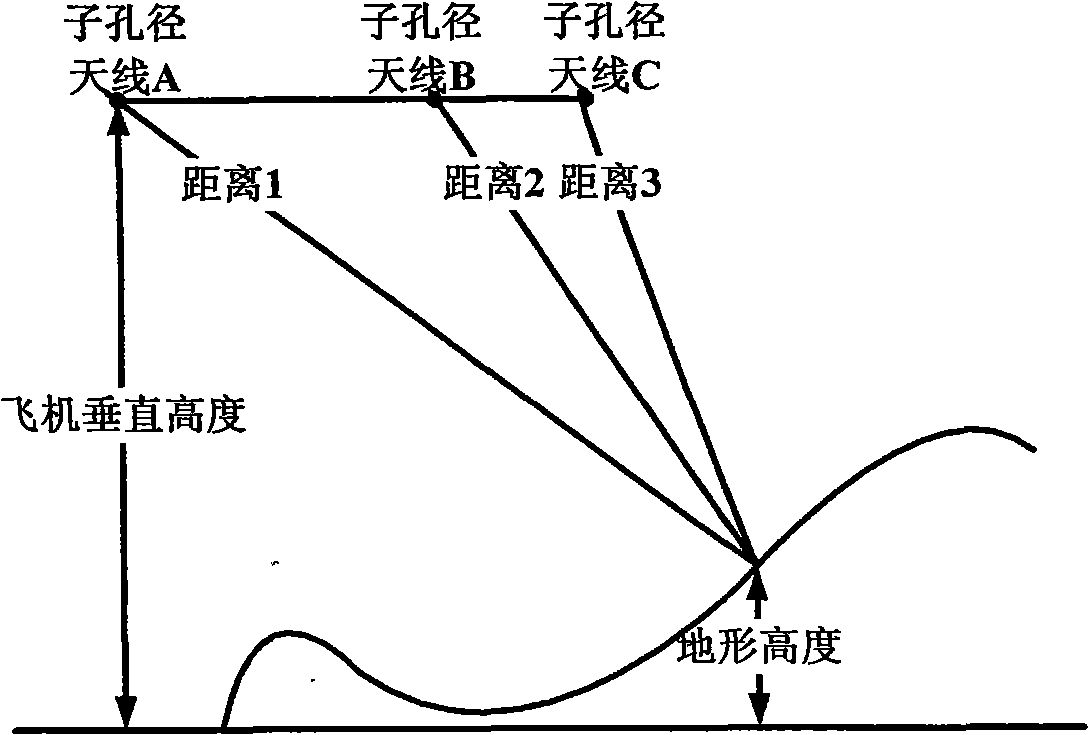3D terrain imaging system of interferometric synthetic aperture radar and elevation mapping method thereof
An interferometric synthetic aperture, three-dimensional terrain technology, applied in the field of radar, can solve the problems of high complexity of phase unwrapping algorithm, slow continuous change, violent deformation of landform, etc. Increase the effect of blur height
- Summary
- Abstract
- Description
- Claims
- Application Information
AI Technical Summary
Problems solved by technology
Method used
Image
Examples
Embodiment Construction
[0028] The system structure and elevation measurement process of the present invention will be described in detail below in conjunction with the accompanying drawings.
[0029] refer to figure 2 , The interferometric synthetic aperture radar system of the present invention includes: three sub-aperture antennas, a radar wave transmitter, a radar wave receiver and an imaging data processor. When the radar is working, the radar wave transmitter first sends radar pulses through the entire aperture antenna or a sub-aperture, and the radar echoes are received simultaneously by the radar wave receivers of the three sub-aperture antennas, and the received signals are transmitted to their respective The data processor, that is, the radar is first switched to the radar wave transmission mode by the switch when it is working. At this time, the radar wave transmitter transmits through the entire aperture antenna or any one of the sub-aperture antenna A, sub-aperture antenna B, and sub-ap...
PUM
 Login to View More
Login to View More Abstract
Description
Claims
Application Information
 Login to View More
Login to View More - R&D
- Intellectual Property
- Life Sciences
- Materials
- Tech Scout
- Unparalleled Data Quality
- Higher Quality Content
- 60% Fewer Hallucinations
Browse by: Latest US Patents, China's latest patents, Technical Efficacy Thesaurus, Application Domain, Technology Topic, Popular Technical Reports.
© 2025 PatSnap. All rights reserved.Legal|Privacy policy|Modern Slavery Act Transparency Statement|Sitemap|About US| Contact US: help@patsnap.com



